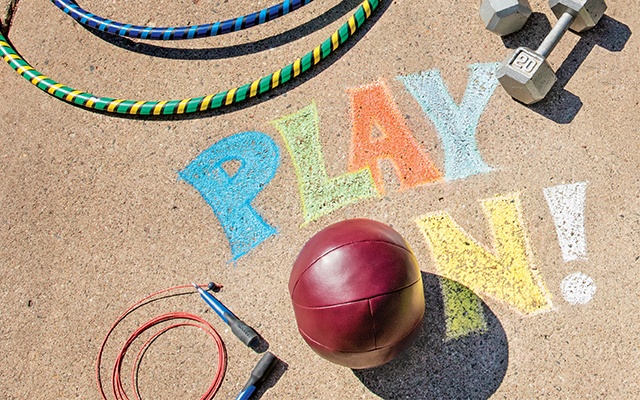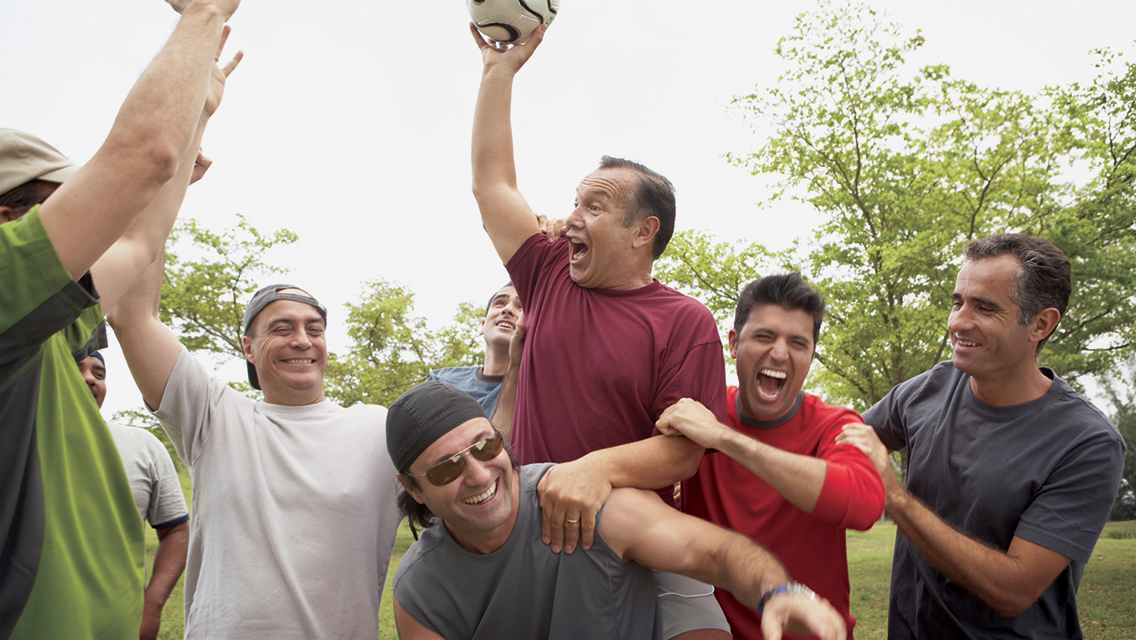If you’ve lost the sense of discovery and joy you used to feel about your fitness regimen, you’re not alone. At some point, virtually all fitness enthusiasts – amateur, elite and pros alike – succumb to boredom, burnout or a major case of the fitness blahs.
But you needn’t settle for dullness and drudgery. Here are a few tactics to try whenever you’re bitten by the boredom bug.
1) Try Something Completely Different
Go beyond what’s familiar. Not only will you challenge your body, but you’ll also engage your brain. Take a martial arts class, learn to rock climb, join a recreational volleyball team or … climb aboard a dragon boat. Dragon-boat racing may seem far removed from your fitness regimen, but for triathlete Bob Mina of West Chester, Pa., this departure from his usual swim, bike and run routine has proven to be the perfect midseason pick-me-up.
Mina started racing in 2004 at the request of his coworkers, who race each October in the Philadelphia International Dragon Boat Festival. The long boat (complete with Chinese dragon head and tail) seats 16 to 20 paddlers; one team member steers from a fixed oar in the back, and another beats a drum in the front.
“I was instantly and completely hooked,” Mina says. Even though on-water practices begin in the height of triathlon season, creating a potentially overwhelming training schedule, Mina loves the blend of activities.
2) Stir It Up
Former professional mountain biker Chrissy deJonge, 40, put away her bike immediately after every season to revel in other types of physical activities. “I was always conscious of not burning out after a season of racing and traveling,” says the two-time Canadian National Mountain Bike Champion and 2000 Olympian. “I generally took a couple of weeks off after the last big event of the year. Then I would start exercising, but without strict distances or times. I just followed my passion.”
DeJonge says her passion led her to hiking, rock climbing, swimming and soccer, among other sports. She says that after four to six weeks, she’d usually feel ready to get back on her bike.
3) Participate for the Fun of It
While competing in serious, race-to-win events provides plenty of positive physical and motivational benefits, you may find even more pleasure and laughter in events that put good-natured adventure, camaraderie (and even silliness) first.
In urban adventure races, for example, like the Quest Urban Adventure races in Houston and Austin, athletes are sent on a running, biking and trekking treasure hunt throughout the city to identify murals, find information in historical markers and, believe it or not, even bob for burritos. You still get to use your speed and skill in events like these, but the lighthearted mood makes for a friendlier sense of competition.
Nowhere is this sense more pronounced than at the Land Rover Certified Muddy Buddy race (www.muddybuddy.com). Bob Babbitt, who organizes the eight-city series, based the event on “ride and tie” competitions, in which a team of two people alternately run and ride horseback on the same course. At designated intervals, the rider stops, ties up the horse and begins running. Meanwhile, the runner reaches the horse and begins riding. The team leapfrogs this way until they reach the finish line.
“I realized after doing a ride and tie that it was a great concept, but the 2,000-pound animal with a mind of its own was a problem,” Babbitt says.
Hence, participants in a Muddy Buddy race use a mountain bike instead. The Muddy Buddy’s biggest race category is the coed division, in which women and men, with or without athletic experience, pair up. Another popular feature is the race’s “Beast” division – the combined weight of the team members must exceed 400 pounds. There’s also the “Mini Muddy Buddy” division for kids under 12.
4) Make a Break From the Big League
If you want to get stronger and faster, train with faster and stronger athletes. But if you want to remember why you train and compete in the first place, surround yourself with beginners: Volunteer at an event, participate in a youth program or mentor an athlete new to the sport.
Dave Neper, a triathlete in Savage, Minn., has competed in triathlons for 10 years. He worked up the race chain and finished Ironman Wisconsin in 2002 and 2004. After those accomplishments, however, Neper found it difficult to get motivated for a race that wasn’t “substantial.”
“I went through this letdown period after finishing a big race,” Neper recalls. “I’d think that anything that wasn’t a big challenge just wasn’t helping me.”
Keeping up with work and a family at home made an annual attempt at the Ironman distance (a 2.4-mile swim, 112-mile bike and 26.2-mile run) unrealistic. Once triathlon became an all-or-nothing proposition in his mind, Neper found himself wondering: Why exercise at all?
That mindset changed in the summer of 2006 when Neper regained his sense of purpose as a triathlete in just three easy lessons. First, he signed up for a small sprint triathlon and, to his surprise, had fun. (Lesson No. 1: Distance is not proportionate to fun.) Then he volunteered at a kids’ triathlon. (Lesson No. 2: A different perspective can help you remember why you enjoy your sport.) And throughout the summer, he mentored a neighbor, who eventually completed his first triathlon with Neper. (Lesson No. 3: A first-timer’s enthusiasm is infectious.)
Now Neper’s goal is to work out every day – even if it’s for an “unsubstantial” amount of time. Neper says his new routine feels more true to his authentic self.
“I’ve realized that something is better than nothing,” he says. “Plus, if I have a goal every day, I’m less likely to blow off my workout for a race that’s a year away.”
He doesn’t expect the fun to drain out of his new routine any time soon. But if it does, he’s not worried: He knows a few surefire strategies for building it right back in.
Not Feeling the Fun?
Seven signs you may be experiencing a fitness-fun deficit:
1. You’re hitting the snooze button more regularly than you’re hitting the gym.
2. You’ve been in an “active recovery” mesocycle for the past six months.
3. Your training partners have taken you off speed-dial.
4. You tell yourself fewer training days means less sweaty laundry to wash.
5. You skip the workout but still meet your pals for the postworkout breakfast.
6. Lately, you’ve been walking away from finish lines thinking “Well, thank goodness that’s over.”
7. You’re looking forward to your next race about as much as you’re looking forward to your next dental cleaning.
This article originally appeared as “Are We Having Yet?”.



This Post Has 0 Comments